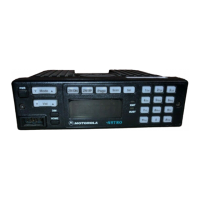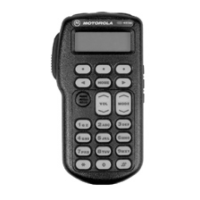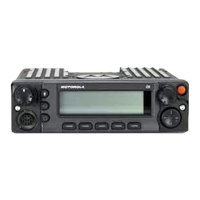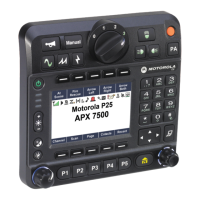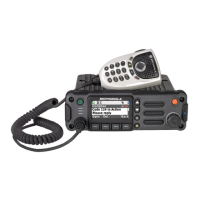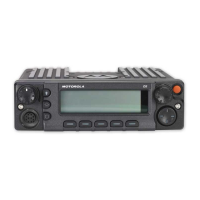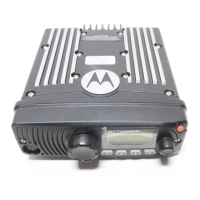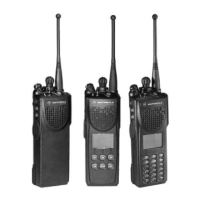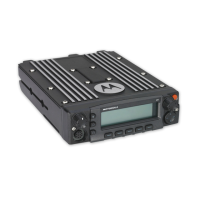September 5, 2008 6881076C25-E
3-8 Theory of Operation: Command Board
3.2 Command Board
This section of the theory of operation provides a detailed circuit description of the ASTRO Digital
Spectra Command Board. When reading the Theory of Operation, refer to your appropriate
schematic and component location diagrams located in “Chapter 7. Schematics, Component
Location Diagrams and Parts Lists”. This detailed Theory of Operation will help isolate the problem
to a particular component. However, first use the ASTRO Digital Spectra and Digital Spectra Plus
Mobile Radios Basic Service Manual to troubleshoot the problem to a particular board.
The command board includes the following integrated circuits:
• U401, U402 – Differential Amplifiers
• U450 – Audio Amplifier
• U500 – Regulator/Power Control IC (RPCIC)
• U501 – 555 Timer
• U502 – D/A Converter
• U503 – Precision Voltage Regulator
• U522 – Serial Input/Output IC (SIOIC)
• U523, U524 – Analog Switch
• U526 – RS232 Level Shifter
• U530 – 8-Bit Shift Register
3.2.1 Microcontroller and Support ICs
The microcontroller and support ICs are located on the VOCON board, and are interconnected to the
command board via connector P501. The control lines linking the boards are either drivers or
receivers, depending upon their application. The VOCON board is responsible for decoding or
encoding ASTRO and analog data, and producing receive audio and transmit deviation.
3.2.2 Serial Input/Output IC
The serial input/output IC (SIOIC), U522, is a special-function logic/linear integrated circuit. In the
ASTRO mobile application, the device provides power-on reset, power control, and bipolar driver/
receivers for serial communication. The SIOIC supports the following functions:
1. A buffer for push-to-talk (PTT) to SLIC (U522, pins 37 and 38). Normally a contact closure for
PTT is detected by the control head, which sends a command to the VOCON board via the
external serial bus protocol. However, some applications require direct PTT control. To
generate PTT via the buffer inverter (pin 37), a contact closure to ground at J502, pin 24, or
from the accessory connector P503, pin 17, will generate a logic high to the SLIC device
(U206, port PH6) on the VOCON board.
2. A buffer for the Busy signal from the VOCON board to the external bus (Busy Out) and the
return path back to the VOCON board (Busy RTS). This function is described in Section
3.2.6, "Serial Communications on the External Bus," on page 3-11.
3. A buffer for Data Transmission from the VOCON board to the External Bus and a received
data return to the VOCON board. This function is described in Section 3.2.6, "Serial
Communications on the External Bus," on page 3-11.
4. Inputs to sense Switched B+ or Emergency enabling the Power Regulators and provide the
switched +5-V regulated supply. This function is described in Section 3.2.3, "Power-Up/-
Down Sequence," on page 3-9.
5. Power-on reset (POR*) circuits provide reset to the Host processor (U204). This function is
described in Section 3.2.5, "Reset Circuits," on page 3-10.
